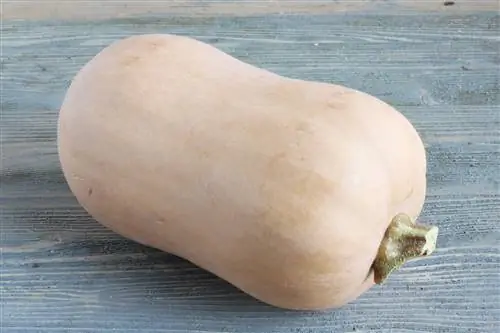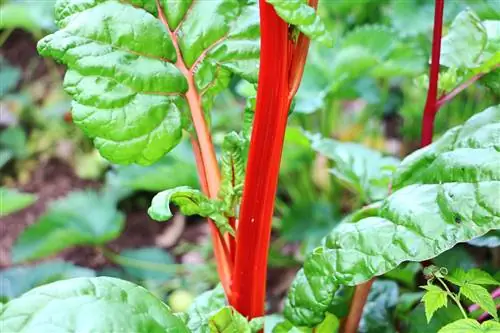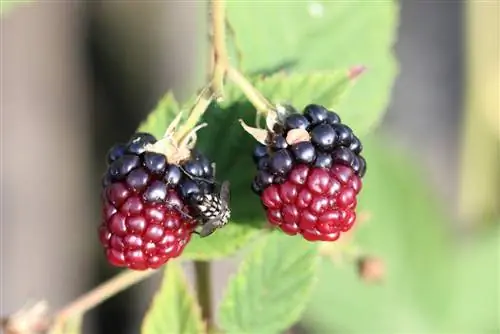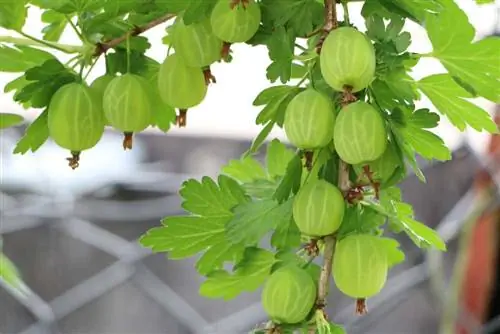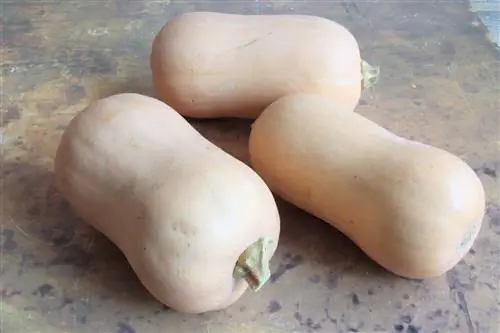- Author admin [email protected].
- Public 2023-12-17 03:39.
- Last modified 2025-01-24 12:45.
Butternut squash is characterized by rich yellow flesh and a pear-like shape. Anyone who has enough space for the vigorous plants will be rewarded with lots of tasty fruits. When is the butternut pumpkin ready to harvest?
Butternut Squash
The butternut squash (Cucurbita moschata 'Butternut') owes its popularity to its tasty pulp, which almost completely fills the fruit. Unlike other types of pumpkin, it has a very thin skin. Only ripe fruits have the full aroma and a pleasant consistency.
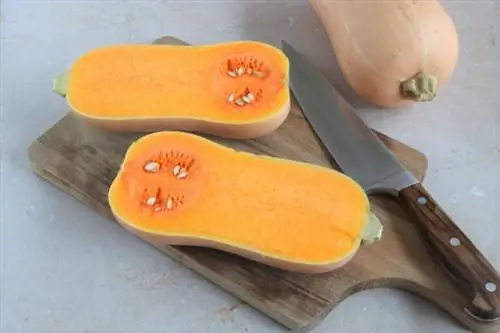
Harvest time
Butternut pumpkins are not ready to harvest until the end of September, a few weeks later than most other varieties. It is important that the fruits are harvested before the first frost.
Maturity characteristics
You can recognize a butternut squash that is ready to harvest by these characteristics:
- usual variety size
- Pumpkin feels firm and heavy
- evenly colored, stripeless, beige shell
- woody, brown stem
- dull knocking noise

Tip:
Grow your pumpkin plants on the windowsill. This allows strong plants to develop whose fruits have enough time to ripen.
Harvesting butternut squash
To harvest the pumpkin, cut it from the plant with a sharp knife. Leave a piece of the woody stem on the fruit, this increases its shelf life.
Storage
Butternut squashes can be stored for several months under favorable conditions. Storage is optimal at around 15 degrees. You can then enjoy he althy pumpkin dishes until spring.
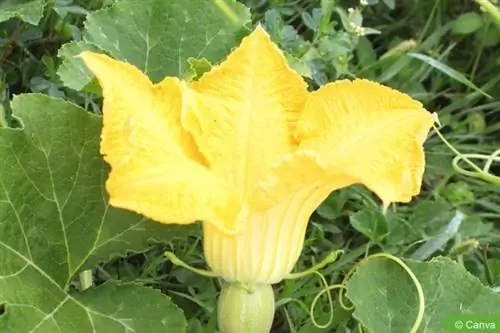
Tip:
Not only the pulp, but also the flowers of the butternut squash are a delicacy. It tastes great fried or fried and can even be used fresh in a salad.
Allow maturation
Butternut squashes that are planted late will not always ripen until the first frost. It may also be the case that early frost forces unripe fruit to be harvested.
Further ripening is possible when the pumpkins have reached a minimum level of ripeness.
Instructions
- Cut the fruit with a sharp knife, leaving a piece of the stem attached to the fruit.
- Place pumpkins on a sand or straw base to ripen.
- Store the fruits at a room temperature of around 15 degrees Celsius. Rooms with low humidity are recommended.
- Ventilate regularly.
- Turn the pumpkins every now and then to prevent pressure marks.
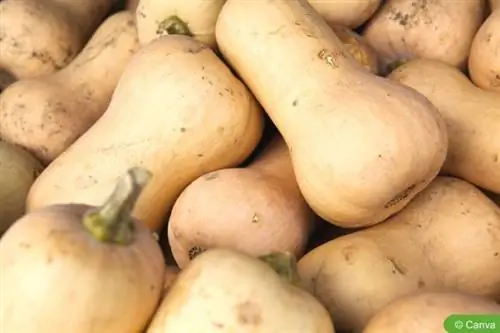
Note:
Sort out rotten fruit. They could infect other pumpkins.
Frequently asked questions
Why can butternut squash taste bitter?
Pumpkins that taste bitter must be thrown away immediately. They are not suitable for consumption. Cucurbits, which also include zucchini and cucumbers, can develop bitter substances that are dangerous to humans. Vomiting, diarrhea or abdominal cramps are typical symptoms of cucurbitacin poisoning. Deaths are also known.
Why do butternut squash often have a light spot?
The bright spot appears where the pumpkin lay on the ground. It is not a sign of a lack of maturity.
How long does a butternut squash grow?
A ripe butternut squash is about 20 to 30 centimeters long. Depending on the variety, this length can also be exceeded. For example, pumpkin plants that grow in a sunny location in rich soil and are adequately watered often produce larger fruits.
Which plants are suitable as partners in the pumpkin patch?
Pumpkins form a perfect bed partnership with corn and runner beans. The vegetables are also known as the “three sisters”. All three benefit from the shading of the ground by the large pumpkin leaves. The nitrogen produced by the beans, on the other hand, strengthens pumpkin plants and corn, while beans can use the corn plants as climbing aids.

